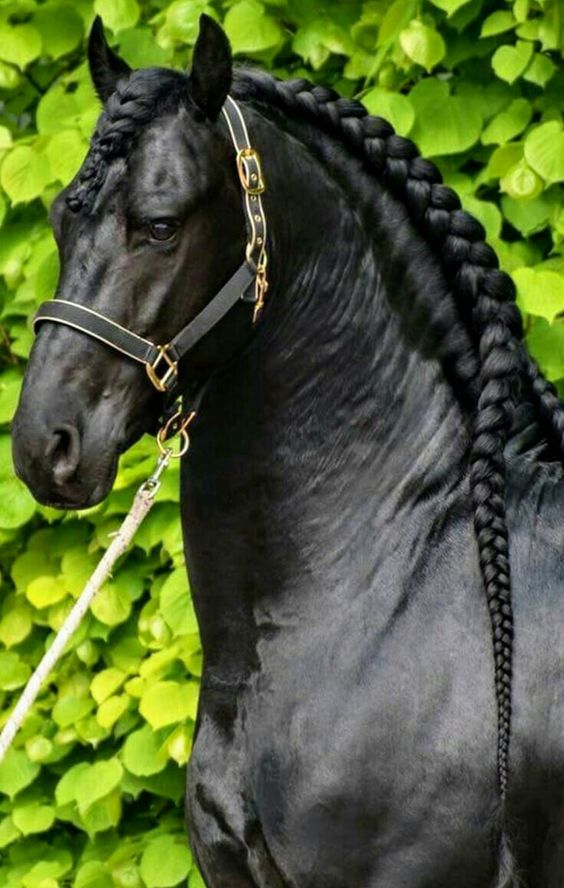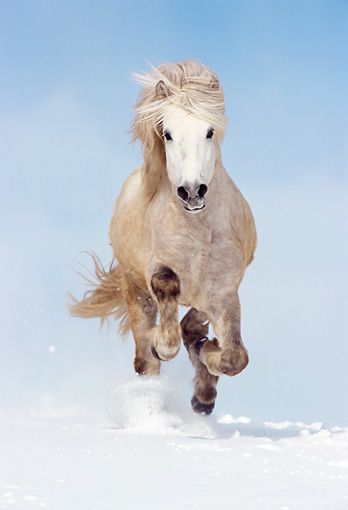My hair isn't always shiny and long, but sometimes it comes out quite nice. These horses, though, have got me all beat and with ease. They've never used shampoo or conditioner, and have rarely had a bath. But somehow, their flowing hair and beautiful looks never cease to amaze me.
Here are a few gorgeous horses with hair to match.
Andalusian
The Andalusian Horse originally came from the Iberian Peninsula, and it is named after the Province of Andalucia, which is the part of the world where it is the most famous. It is believed to be an ancient horse breed, as a similar type of horse is depicted in cave drawings that are 20,000 years old, and Homer even mentioned these horses in his work
Appaloosa
The Appaloosa horse is a breed of horse associated with the Nez Perce Native American culture. Today they are great trail riding horses for horse owners and have several breed registries.
Arabian
Earliest improved breed of horse, valued for its speed, stamina, beauty, intelligence, and gentleness. The breed’s long history has been obscured by legend, but it had been developed in Arabia by the 7th century.
The Arabian horse has contributed its qualities to most of the modern breeds of light horses
Clydesdale
The Clydesdale breed once almost faced extinction. Even though there is little practical use for heavy horses today because their muscle power has been replaced by machinery, breeders and enthusiasts have ensured that the breed is increasing, rather diminishing in numbers. Even so, it remains on some endangered lists even though it is often one of the most easily recognized heavy horse breeds.
Friesian
The Friesian horse is one of Europe’s oldest breeds. It was developed in Friesland, a northern province of the Netherlands. Where a heavy horse has existed as far back as 1000 B.C. The Romans used these horses and brought some to Britain, where they have influenced some of our native breeds such as the Fell, Dales and Shire. Because of their courageous nature and great strength the Friesian horse was used in medieval times to carry Knights into battle.
Today Friesians are very popular as driving horses, dressage, showing and general riding.
Gypsy Vanner
Through selective breeding over more than 100 years Gypsy men and their families in England and Ireland created this breed of horses. Their goal, was to create a unique draft type horse that could pull their caravans in fancy fashion yet was docile enough to be handled by their children and would work all day with small amounts of food and water.
Icelandic horse
When the first settlers sailed from Norway to Iceland in the 10th century, they could only bring about two horses per ship, so they selected the best and strongest horses. The horses were of Scandinavian origin, mostly from Norway. The settlers often made a stop-over in Ireland, Scotland or the Shetland Islands, in this way different breeds could have found their way to Iceland. The horse was necessary for the colonization of Iceland, even a long time after cars were common, the highlands and other parts of Iceland did not have roads so the horse was still important. As early as in the 10th century the Icelanders decided to stop importing horses and and since then it has been totally forbidden to import horses to Iceland. This means that the horses have been very isolated, and the different breeds blended together and formed the Icelandic horse of today. The strongest and most well-acclimated horses survived and through this “Survival of the fittest”, the Icelandic horse of today is extremely well adapted to Icelandic conditions. Still today, it is strictly forbidden to import horses. A horse that has left Iceland can never return, so horses that take part in competitions in other countries must be sold after the competition.
Kiger Mustang
The Kiger Mustang is a breed of horses that originated in the state of Oregon, USA. Characterized by highly-prized primitive markings, these horses are known for their versatility, calm yet proud personality, and work ethic, and are the progenitors of the modern day mustangs.
Shire horse
Shire Horses are very tall and have held records for being the strongest horses and the largest. In the days when horses were used as draft animals, they were well known for their immense pulling power. That real horsepower is no longer used has put the Shire Horse on the list of endangered livestock breeds in the UK, USA, and Canada. In Canada, it is estimated that there are less than one hundred individuals, and the breed is on the “critical list” of the American Livestock Breeds Conservancy.
Norwegian fjord
The Norwegian Fjord is considered one of the oldest pure breeds of horse. While they bear a striking resemblance to the Asiatic wild horse or Przewalski horse, they are in fact more closely related to the European wild horse, the Tarpan, as the Przewalski horse has 66 chromosomes while both the Fjord and the Tarpan have 64.
It is believed that the original Fjord horse migrated to Norway and was domesticated over 4000 years ago. Archeological evidence suggests that the Fjord horse has been selectively bred for over 2000 years, first by the Vikings around 1200 BC. Rune stone carvings in Norway, many of fighting stallions, show images of horses recognizable as Fjords. The Vikings took their Fjords, which they used as war mounts, in their travels to Scotland, Iceland, and elsewhere. In these lands the Fjord influenced the Highland Pony and the Icelandic Horse.
Please Share If You Like...















































No comments:
Post a Comment